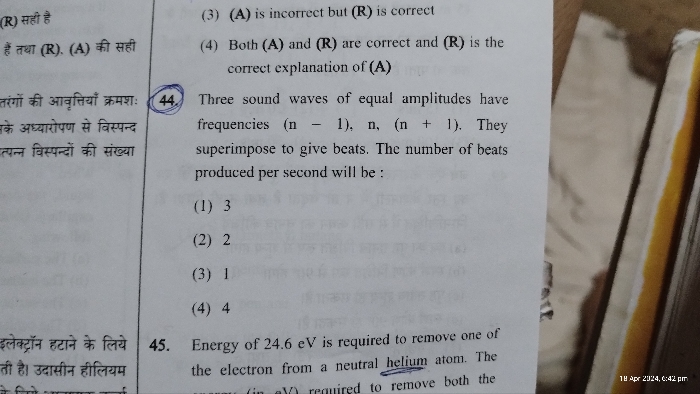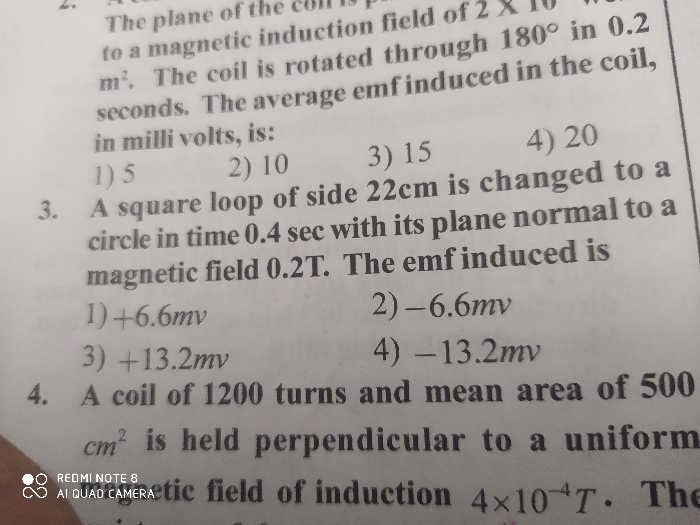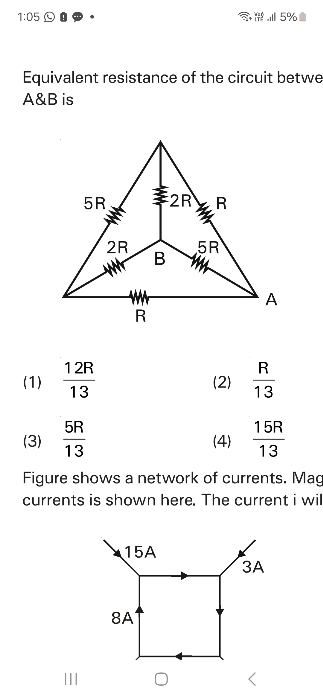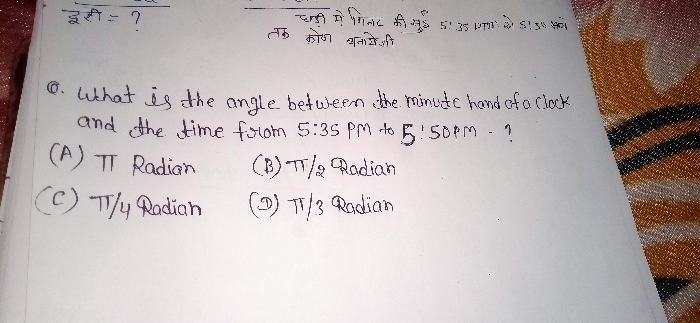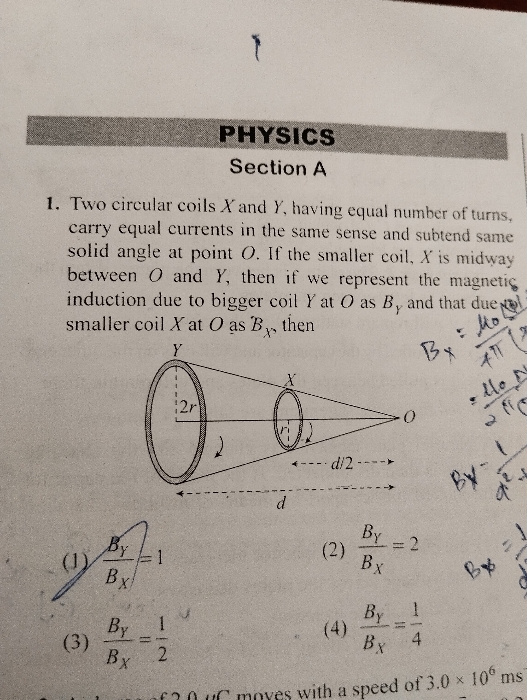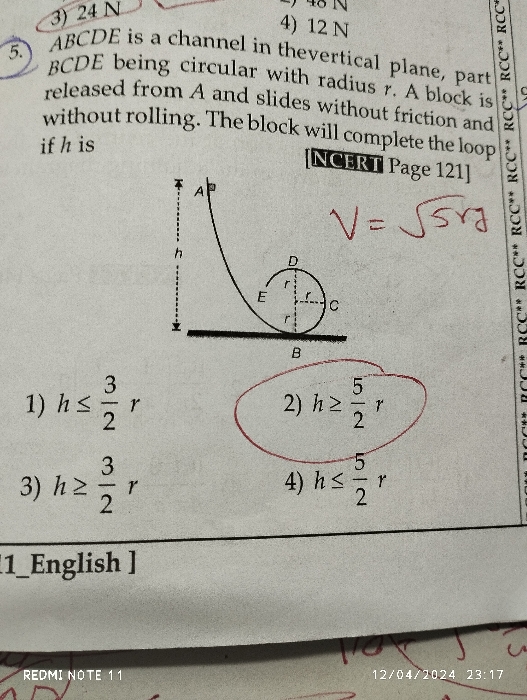NEET Class neet Answered
HELP
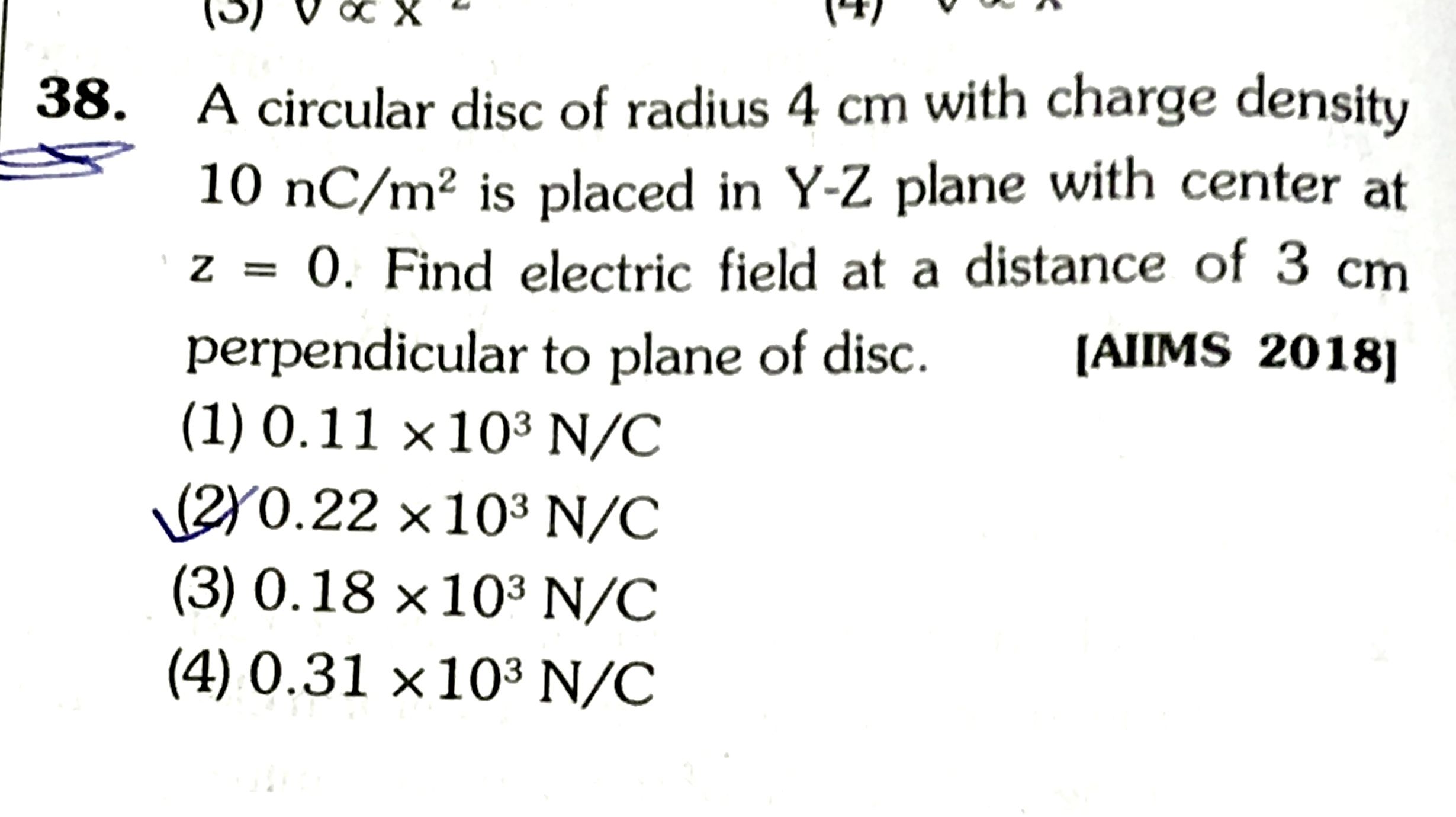
Asked by astutijoshi | 28 Jul, 2019, 04:01: PM
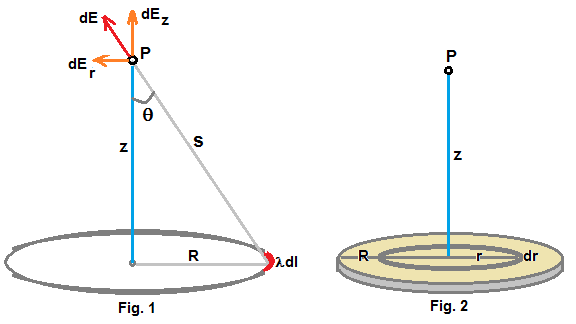
Fig.1 shows a charged ring of radius R that has charge density λ per unit length.
We need to find elecrical intensity at a point P which is on the axis passing through centre of ring and at a distance z from the centre.
we consider a small length dl in the ring that has charge λdl. Direction of electric field dE is shown in figure.
 ................................. (1)
................................. (1) Electric field dE can be resolved in axial direction as dEz and radial direction dEr as shown infigure.
Axial field : 

When we add the electric field due to whole ring by integration, Radial component will be cancelled out.
Hence Electric field of whole charged ring at a point P =  ..................(2)
..................(2)
 ..................(2)
..................(2)In the above eqn.(2), 2πRλ in the numerator is the total charge on the ring.
Now let us calculate electric field due to a circular disc of radius R that has charge density σ per unit area.
Fig.2 shows such a disc. Let us consider a ring which is part of disc that has radius r, thickness dr as shown in figure.
Using eqn.(2), we get the electric field dE due to this ring at a point P which is at a distance z from centre of disc is given by
 ..........................(3)
..........................(3)Electric field due to charged disc is obtained by integrating above eqn.(3).
 ........................(4)
........................(4)From eqn.(4), by substituting σ = 10 nC/m2 , R = 4 cm and z = 3 cm, we get electric field E = 0.226×103 N/C
Answered by Thiyagarajan K | 29 Jul, 2019, 07:43: AM
Application Videos
NEET neet - Physics
Asked by shatakshibhatt9 | 20 Apr, 2024, 07:52: PM
NEET neet - Physics
Asked by praveenpriya000079 | 18 Apr, 2024, 07:24: AM
NEET neet - Physics
Asked by gouranshi84 | 17 Apr, 2024, 05:23: PM
NEET neet - Physics
Asked by sojusvi | 17 Apr, 2024, 01:12: PM


